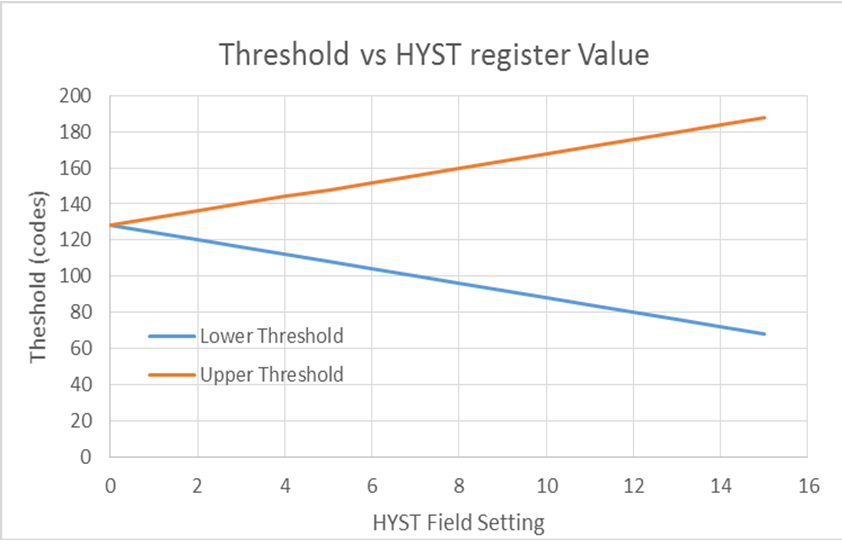SNOA993A June 2018 – July 2021 LDC2112 , LDC2114 , LDC3114 , LDC3114-Q1
6.1 Threshold and Hysteresis
After applying Gain Factorx, each channel Netx is compared to a fixed threshold of 128+Hysteresis. The Hysteresis value is set by the HYST register field. The Hysteresis value can be set from 0 to 60, in increments of 4. The HYST setting is common to all channels. A larger HYST setting improves the noise immunity and also increases the minimum button actuation time (when BTPAUSEx is not enabled). The GAINx and HYST settings effectively produce a variable Upper and Lower threshold, as seen in
 Figure 6-2 Compare Thresholds based on HYST setting
Figure 6-2 Compare Thresholds based on HYST settingThe hysteresis and threshold operation is consistent with standard practice, in that:
- If OUTx is asserted, OUTx deasserts if NETx < Lower Threshold
- If OUTx is deasserted, OUTx asserts if NETx > Upper Threshold